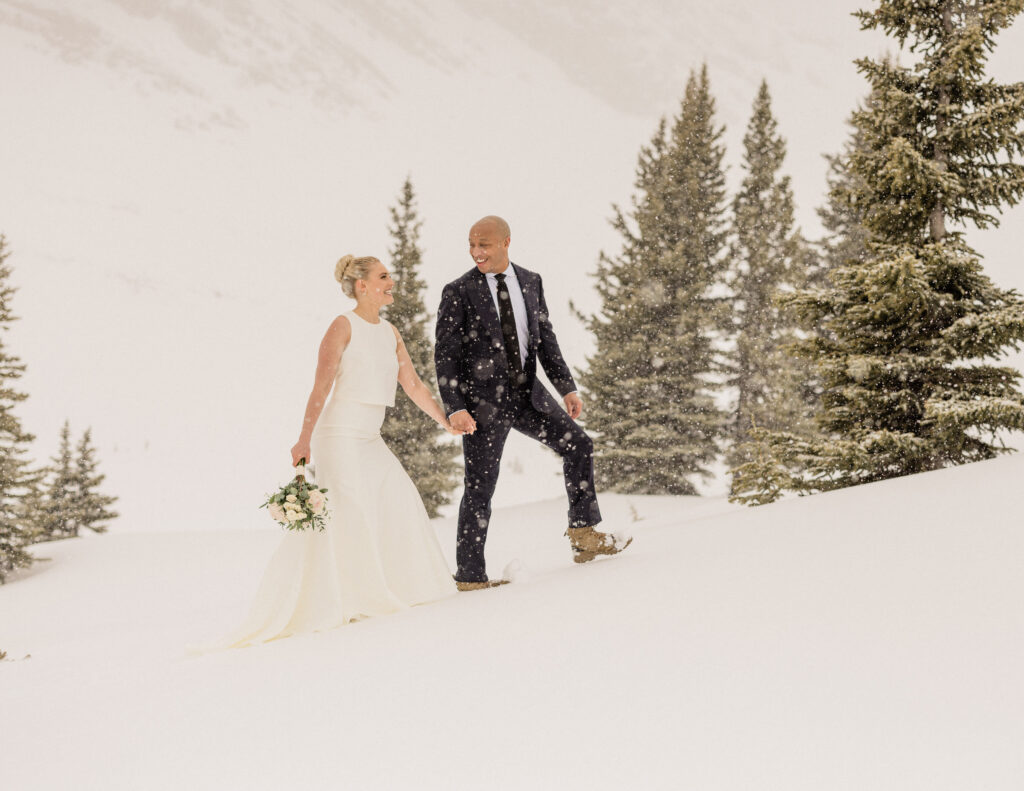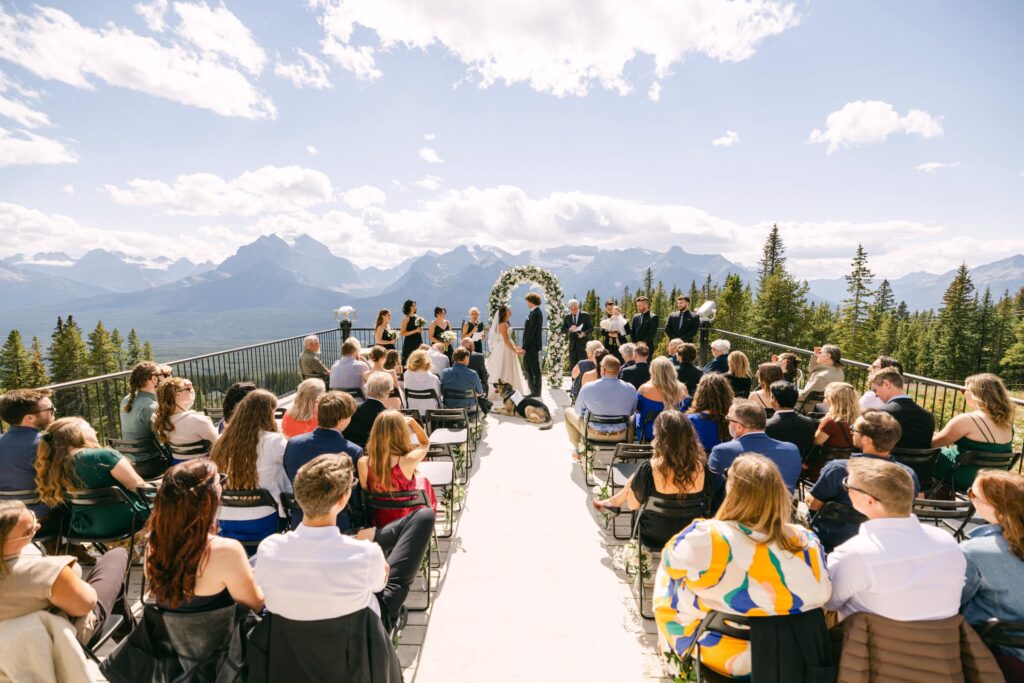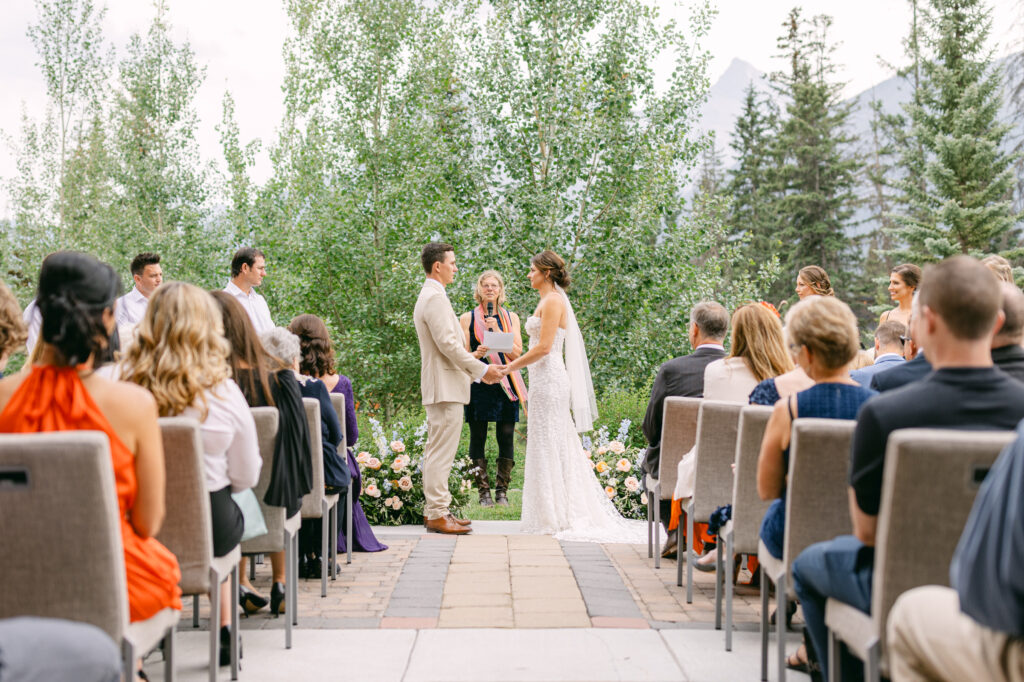Do Photographers Retouch Wedding Photos?
Some do, and some don’t. To be honest, much depends on the skill level and philosophy of the photographer. For instance, I rarely, if ever, need to use external programs like Photoshop to retouch my work. You might wonder why or how that’s possible—after all, isn’t Photoshop the industry standard?
Not necessarily, at least not in my world. Before moving to Calgary my training began at a professional photography school, working with 35mm, medium format, and large format film. Digital came later for me, so I learned how to capture incredible photographs in-camera rather than relying on post-processing to fix or enhance my work.
Yes, I edit my photographs in a program called Lightroom, which is the modern equivalent of the darkroom. Every image on my site is developed to achieve my desired natural look, reminiscent of the timeless quality that film used to provide.
The Evolution of Retouching in Wedding Photography
The Digital Revolution
Digital photography has transformed the industry, allowing photographers to edit images with incredible precision. Tools like Lightroom make it possible to enhance colors, tones, and details to suit a specific style.
However, not all edits are equal. Some photographers rely on presets for a generic finish, while others invest in personalized editing that enhances their artistic vision. When viewing a wedding portfolio, consider whether the style resonates with your preferences. Personally, I prefer a natural look that emulates film, even when using flash photography, ensuring my images look balanced and timeless—not over-edited.
The Timeless Appeal of Film
Many photographers aspire to replicate the classic look of film through digital techniques. Film, celebrated for its natural tones and textures, requires minimal retouching. Modern tools can now emulate this look, giving you the best of both worlds.
If you’re getting married in Alberta and love the charm of film-inspired photography, choosing a photographer like me who specializes in this timeless aesthetic is key.
Explore Blog Posts From Geoff Wilkings Photography
Portraiture Key Elements of Retouching
Skin Retouching
For headshots or commercial work, some level of retouching is often necessary. Skin retouching involves removing temporary blemishes while maintaining a natural appearance. This ensures you look your best without altering your features.
Working with a professional hair and makeup artist is one of the top reasons to hire a makeup artist, as it minimizes the need for extensive retouching. A good foundation enhances the overall quality of your photos.
Removing Distractions
Sometimes, small distractions—like stray hairs or background clutter—can detract from a perfect shot. Retouching eliminates these elements to focus on what truly matters: you and your partner.
For wedding photography, retouching every single image isn’t practical, especially with over 1,000 photos from a single day. Instead, images selected for wall art and fine art albums are given extra attention to ensure they’re flawless. However, mastering in-camera techniques is the foundation for creating successful images.
Explore My Articles to Help Plan Your Celebration
Common Misconceptions About Retouching
Over-Editing Isn’t Always Better
Some photographers heavily rely on editing to transform their work, but this can result in images that look unnatural and dated. Instead, focus on finding a photographer who values authenticity and timelessness.
Natural Doesn’t Mean Unedited
A natural look doesn’t imply skipping retouching altogether. It’s about enhancing the photo subtly to highlight its best features without making it appear artificial. This is particularly important when applying the best tips for candid photography to capture genuine moments.
Retouching Isn’t a Replacement for Good Photography
Editing can improve a photo, but it can’t fix poor composition or lighting. A skilled photographer captures incredible images straight out of the camera, needing only minimal adjustments. When considering what does the average wedding photographer cost, remember that experience and expertise are priceless.
Retouching Tools and Techniques
The Power of RAW Files
Photographers often shoot in RAW format, which retains all the details of an image. RAW files are like digital negatives, allowing precise edits and adjustments for high-quality results.
Ask your photographer about their workflow to ensure they prioritize editing to match your vision.
Tools of the Trade
Professional photographers use advanced tools like Lightroom and Photoshop to edit images. These programs allow detailed adjustments, from color correction to blemish removal.
Investing in high-quality monitors, Wacom tablets, and calibrated editing equipment ensures precision and consistency. This expertise is reflected in the final images showcased in their wedding portfolio.
Balancing Time and Cost
Editing is time-intensive and requires specialized skills. While some photographers outsource this work, others manage it themselves. Understanding what does the average wedding photographer cost will help you appreciate the effort and expertise involved in the editing process.
Explore Blog Posts From Geoff Wilkings Photography
The Role of Retouching in Storytelling
Preserving Memories
Photos are more than just images—they’re memories. Retouching enhances these memories, ensuring they remain vivid and meaningful for years to come. Whether displayed as wall art and fine art albums or shared digitally, your photos should evoke the emotions of your special day.
Final Thoughts: Do Photographers Retouch Wedding Photos?
The answer depends on the photographer’s style and expertise. While some prioritize heavy retouching, others, like me, focus on creating images that are authentic, timeless, and natural.
Retouching is just one aspect of wedding photography. The real magic happens when a photographer captures genuine moments that reflect your love story.
Let’s create something beautiful together. Contact me today to discuss how I can help bring your vision to life.














